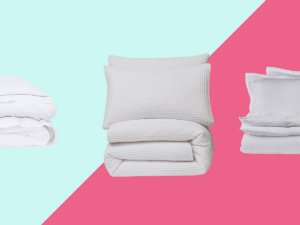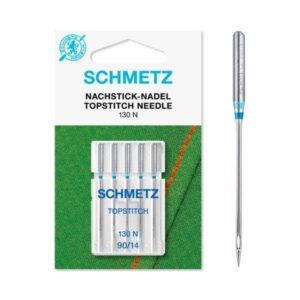How to Sew Nylon and Voile Together?
Mixing fabrics like nylon and voile can create unique and beautiful garments or home decor items. Understanding fabric compatibility is crucial in sewing and fashion design to ensure the final product is both aesthetically pleasing and functional. In this article, you’ll learn how to sew nylon and voile together effectively, including their compatibility, benefits, challenges, and practical sewing tips.
Compatibility Analysis
Yes, nylon and voile can be sewn together. These fabrics can complement each other when combined thoughtfully, offering a blend of strength and delicacy. Nylon is a synthetic fabric known for its durability and elasticity, while voile is a lightweight, sheer fabric often made from cotton or polyester. Key factors to consider include:
- Texture: Nylon has a smooth, slightly shiny texture, whereas voile is soft and matte. This contrast can create visual interest.
- Weight: Nylon is generally heavier than voile, so careful handling is needed to prevent the heavier fabric from overpowering the lighter one.
- Stretch: Nylon is more elastic, which can add flexibility to the combination.
- Care Requirements: Both fabrics have specific care needs, which must be considered to avoid damage.
- Durability: Nylon adds strength to the delicate voile, enhancing the overall durability of the garment or item.
Fabric Properties Comparison Table
| Property | Nylon | Voile |
|---|---|---|
| Fiber Content | Synthetic | Natural/Synthetic |
| Weight and Thickness | Medium, varies | Lightweight |
| Breathability | Low | High |
| Stretch and Elasticity | High | Low to None |
| Wrinkle Resistance | High | Moderate |
| Care Instructions | Cool wash, no bleach | Gentle wash, cool iron |
| Durability | High | Moderate |
Benefits of Mixing These Fabrics
- Enhanced Texture and Visual Interest: The contrast between nylon’s sheen and voile’s matte finish adds depth to designs.
- Improved Comfort and Performance: Nylon’s stretch complements voile’s breathability, making garments comfortable and functional.
- Better Drape and Movement: Voile’s lightness combined with nylon’s structure offers an elegant drape.
- Cost-Effectiveness: Using a blend can reduce costs by combining a more expensive fabric with a less costly one.
- Seasonal Versatility: This combination can be adapted for different seasons, offering warmth or coolness as needed.
- Design Possibilities: The mix allows for creative designs in both fashion and home decor.
Potential Challenges
- Different Shrinkage Rates: Pre-wash fabrics to minimize differences.
- Conflicting Care Requirements: Follow the most delicate fabric’s care instructions.
- Texture Clash or Pilling: Use a fine needle to reduce friction and pilling.
- Seam Puckering: Use appropriate tension settings and a walking foot to prevent puckering.
- Color Bleeding or Fading: Test wash fabrics separately to check for colorfastness.
Sewing & Styling Tips
- Sewing Techniques: Use a straight or zigzag stitch with a small stitch length.
- Needle and Thread Recommendations: A fine needle (size 70/10) and polyester thread work well.
- Interfacing and Stabilizer Needs: Use lightweight interfacing to support voile without adding bulk.
- Seam Finishing Methods: French seams or overlocking prevent fraying.
- Pattern Selection Advice: Choose patterns with simple lines to showcase the fabric contrast.
- Styling Ideas: Layer voile over nylon for skirts or use nylon for structural elements in home decor.
Care & Maintenance Guide
- Washing Instructions: Hand wash or use a delicate cycle with cold water.
- Drying Recommendations: Air dry to prevent shrinkage and distortion.
- Ironing and Steaming Tips: Use a cool iron on voile; nylon may not require ironing.
- Stain Removal: Treat stains promptly with mild detergent.
- Long-Term Care: Store in a cool, dry place to prevent damage.
FAQ Section
-
Can you wash nylon and voile together?
Yes, but use a gentle cycle and cold water to accommodate both fabrics. -
Will nylon shrink more than voile?
Nylon is less prone to shrinkage than voile, but pre-washing both is advisable. -
What needle size should I use for sewing nylon and voile together?
A fine needle, such as size 70/10, is recommended. -
Can you mix nylon and voile in one garment?
Yes, combining these fabrics can enhance both visual appeal and functionality. -
How do you prevent seam puckering when combining these fabrics?
Use a walking foot and adjust tension settings to minimize puckering. -
Is it okay to mix nylon and voile for upholstery?
It’s possible, but consider durability and care requirements for upholstery use. -
What’s the best way to finish seams with nylon and voile?
French seams or serging provide a clean finish and prevent fraying.
By following these guidelines, you can successfully sew nylon and voile together, creating stunning and versatile pieces for both fashion and home decor.


Leave a Reply